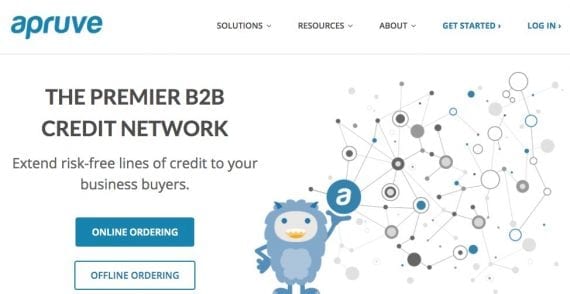
B2B merchants often sell to companies with extended payment terms. Merchants can speed up getting paid by using an online credit provider, such as Apruve.
Many B2B merchants have avoided ecommerce because they believe their customers will not do business in that manner. Merchants often have concerns about payments, as B2B customers pay in different ways and merchants do not understand how to manage that online.
In this article, I will address how B2B merchants have solved online payment challenges.
Pay by Purchase Order
It is relatively common for business customers to “pay” via a purchase order. The challenge for the seller is to have precautions in place to ensure that only approved customers can use purchase orders, for preset credit limits. There are ways to make this work.
First, require potential customers to fill out an application that is reviewed by your customer service team. Merchants sometimes allow the prospects to place orders via credit card before their application is reviewed.
Next, enable approved businesses to place orders via purchase order. Do this by logging into your ecommerce platform and indicate that approval and the credit limit. Alternatively, send the approval and credit amount to your ecommerce platform via an integration with your accounting or backend software. That integration can allow the ecommerce platform to track offline orders and factor those into the available credit balance.
Online Credit Management
For customers with extended payment terms, you may consider online credit management services, such as Apruve. This enables real-time credit approval for new customers and the merchant is paid within 24 hours of a shipment, minus financing fees.
This can help customers, too, as it allows multiple buyers within their organization to place orders, which are then lumped into a single invoice that is due on the 15th of the following month, or whatever payment terms are agreed to with the credit management service.
Thus an online credit management service can simplify your customer’s experience, and allow your company to get paid faster.
Procurement Punchout
Business customers typically have a purchasing department and may use software as a part of their purchasing workflow. You can make it easier to buy from you by integrating your ecommerce site with their procurement software. This is called a procurement punchout.
For sellers, there are two general approaches to this: Integrate with each different procurement software — such as Ariba, SciQuest, Coupa, SAP, Oracle — or integrate with a facilitator, such as PunchOut2Go, that provides a single integration point and enables you to offer a punchout to over 60 procurement software applications. (My company, I should add, is a reseller of Punchout2Go.)
Using a punchout, your buyer can start on your website and fill up his shopping cart. Once he is ready to place the order, he can “punch out” and send the data from the cart to his procurement system. The punchout solution can end there, or it can continue so that when the purchasing department approves the order, the purchase order is electronically transmitted back to your ecommerce site. An additional integration could electronically send your invoice to buyer’s system after the order has shipped.
In my experience, some business buyers require their suppliers to offer punchouts. Beyond that, some B2B sellers offer punchout solutions to entice larger customers or new customer segments.
ACH, e-Check
ACH and e-check payments are electronically withdrawn from the buyer’s checking account, transferred over an ACH network, and deposited into the seller’s checking account. You can configure your ecommerce platform to allow customers to pay via e-check or ACH. If you go this route, make sure the money is immediately available, without recourse, before shipping the order.
Credit Cards
In B2B ecommerce, the use of credit cards can be complex. The most common area of complexity occurs when the order costs are more than what was authorized during checkout. This is common in B2B, when shipping charges are unknown in checkout, and when customers can edit orders after they are first submitted.
In both of these instances, merchants typically involve a developer. The customizations include making additional API calls to the credit card gateway for additional authorizations against the customer’s credit card.
Regardless, make sure to use a processor that will store the credit card data without it residing in your system. This is important for security, and liability.




